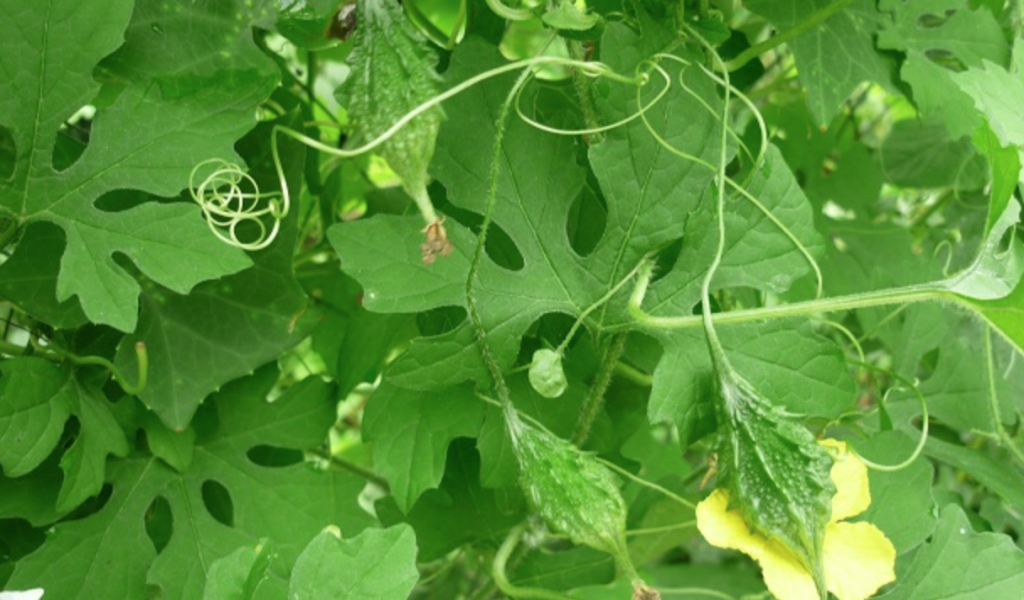ຜັກໄຊ່ / Balsam apple
APA 6th ed. ຜັກໄຊ່ / Balsam apple. (2019, April 3). Retrieved from https://www.phakhaolao.la/kb/0000180
MLA 8th ed. ຜັກໄຊ່ / Balsam apple. Pha Khao Lao, 3 April 2019, https://www.phakhaolao.la/kb/0000180.
Chicago 17th ed. Pha Khao Lao. 2019. "ຜັກໄຊ່ / Balsam apple." Published April 3, 2019. https://www.phakhaolao.la/kb/0000180.

Cucumis intermedius M.Roem.
Momordica charantia subsp. abbreviata (Ser.) Greb.
Momordica charantia f. abbreviata (Ser.) W.J.de Wilde & Duyfjes
Momordica charantia var. abbreviata Ser.
Momordica charantia var. longirostrata Cogn.
Momordica charantia var. muricata (Willd.) Chakrav.
Momordica chinensis Spreng.
Momordica elegans Salisb.
Momordica indica L.
Momordica muricata Willd.
Momordica sinensis Spreng.
Momordica thollonii Cogn.
Sicyos fauriei H. Lév.
Cambodian: mreah
Vietnamese: kho qua, maw op dang, maw op muh
Chinese: ku gua
English: balsam apple, balsam pear, bitter cucumber, bitter lemon, bitterweed, bitterleaf leprosy gourd, bitter gourd, carilla fruit
Phak sai is a perennial many-branched climbing herb, growing up to 2 m high. Its stems are slender and hairy, with tendrils 20 cm long. The leaves are broadly oval and five-lobed, 4-12 x 4-12 cm, and the leaf lobes are oval and toothed with stalks of 3-6 cm. The white or yellow flowers are roughly 2 cm in diameter. The oval pulpy fruit usually tapers at both ends, reaching 10 cm-15 cm in length and 3.8-6.4 cm in diameter, depending on the variety. It has rows of little lumps that are orange-red when ripe. Inside it is sticky, with four red seeds which are leaf-shaped with jagged edges, measuring 1.2-1.6 x 7-8 mm. Phak sai is a relative of squash, watermelon and cucumber, found in many varieties that vary in fruit size and shape. It is one of the most commonly cultivated NTFPs all over the world.
The tender shoots, young leaves and immature fruit of this plant are eaten blanched. The fruit, which tastes less bitter when cooked in soup, is also used in a medicinal drink. It works as an anti-diabetic, and treats skin diseases, tumours, and viral infections like HIV, herpes, hepatitis, influenza and measles. In traditional Chinese medicine phak sai is used in the treatment of stomach and intestine infections. The leaves may be eaten raw in small quantities but pregnant women should not use it as the plant may cause abortion
